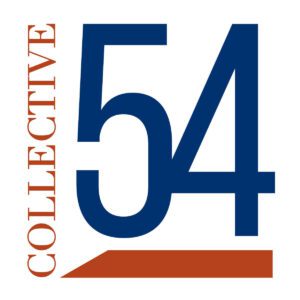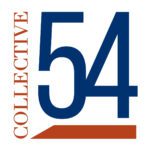Yield is the ultimate measure of productivity. In this episode, we discuss how professional services firms scale faster by thinking about different ways to improve yield.
TRANSCRIPT
Sean Magennis [00:00:15] Welcome to the Boutique with Capital 54, a podcast for owners of professional services firms. My goal with this show is to help you grow scale and sell your firm at the right time for the right price and on the right terms. I’m Sean Magennis, CEO of Capital 54 and your host. On this episode, I will make the case that yield is the ultimate measure of productivity. I’ll try to prove this theory by interviewing Greg Alexander, Capital 54’s founder and chief investment officer. Greg has helped owner’s scale faster by thinking about different ways to improve yield. Greg, good to see you and welcome.
Greg Alexander [00:01:03] Hey, pal. Good to be with you. Appears today we are going to discuss the most often looked at metric in all of professional services.
Sean Magennis [00:01:11] Yes, we are. Yes, we are. To begin. How about you provide us a working definition of yield?
Greg Alexander [00:01:18] Sure. So yield is simply the average fee per hour times the average utilization rate of the team. For example, if a boutiques average fee per hour is 400 dollars and the average utilization rate is 75 percent, then the yield is three hundred dollars per hour.
Sean Magennis [00:01:37] OK. That is really easy to understand. And why is it relevant to our audience, which consists of owners of professional services firms who are trying to scale beyond the lifestyle business?
Greg Alexander [00:01:49] Huh. So it is mission critical to those trying to scale. And here’s why. The typical boutique runs off an assumption of a 40 hour workweek and a 48 week year. This equates to 1972 hours per employee using our earlier example at 300 dollars per hour. The boutique will do five hundred seventy thousand dollars in revenue per employee. So a 100 person firm, let’s say, with this year will do fifty seven point six million in annual revenue. Understanding yield means you understand how much you can scale to. It establishes a ceiling and therefore it is so important for our listeners to understand.
Sean Magennis [00:02:32] Got it. So the suggestion to listeners then is to do the math and determine the scale ceiling. Let’s suppose we don’t like the answer. Greg, we want to scale past the ceiling. What can they do then?
Greg Alexander [00:02:45] Good question. And that is how we want all of our listeners to be thinking, how big can I get? Most boutiques can quote you their utilization rate from memory. This is a well tracked metric and it should be boutiques that have made it past the startup stage, have already optimized for the utilization rate. They would not have survived otherwise. Therefore, an improvement in utilization rate does not lead to scale. The point of diminishing returns has occurred unless, of course, you’re going to ask employees to work on Christmas Day. The scale owners need to turn to fees.
Sean Magennis [00:03:23] So, Greg, just before we jump to fees, let me make sure I recap what was just said. You contend that most firms, when trying to scale, have reached the point of diminishing returns on utilization rates. And you feel this way because there’s only so much juice to squeeze out of the 40 hour workweek and the 48 week year, is that correct?
Greg Alexander [00:03:43] Yes, it is. So have a look at the U.S. business calendar. It is tough to get more than forty eight weeks. Employees need a couple weeks vacation. There are sick days and there are dead periods, such as the week between Christmas and New Year’s and Thanksgiving week, etc.. It is easier to get more than a 40 hour week, especially in the work from home setting as a line between work and life had blurred. Many people routinely work 50 plus hours a week. But in my experience, most of these extra hours are non billable. So they did not move the revenue line that much.
Sean Magennis [00:04:18] Okay, so let’s assume the 1920 hours per employee assumption holds as there’s not much one can do to improve it. Now you say it’s time to turn to fees. Why is that?
Greg Alexander [00:04:31] Yes. So remember, this is an equation with only two variables utilization rate and dollars per hour. Owners of boutiques have more juice to squeeze out of the dollars per hour variable and impacting the dollars per hour variable is not as easy as raising prices.
Greg Alexander [00:04:48] Most boutiques are in competitive markets. The intense competition drives downward pressure on fees. So if this is true for our listeners, what can they do to impact dollars per hour? So key to scaling in this context is to figure out how to become more valuable to clients. Clients will pay more for boutiques that bring more value to them. This is because clients turn to boutiques for specialization. These clients have moved away from the huge generalist firms. They are willing to pay more for highly specialized expertise.
Sean Magennis [00:05:27] That makes total sense, Greg. So it appears the key to higher prices is more specialization. Can you give the audience some ideas on how to increase their specialization?
Greg Alexander [00:05:38] Sure. In my experience, there are five forms of specialization that translate to higher fees, and they are, so number one specializing by industry vertical. Number two, specializing by function. So I serve the CFO or I serve the CTO. Number three is specialize in by segment. So I call on large enterprises or I call on consumers or I call on small business owners, etc. Number four is specializing on problem. So cyber security risk is a problem and I specialize around that. Number five, I specialize in geography. So here we are in Dallas, Texas, and I serve clients in Dallas, Texas. So let me give you a hypothetical example of a highly specialized firm. Clients would pay a premium for a consulting firm that helps product managers and enterprise software companies in Silicon Valley move to the cloud. To notice the five forms of specialization, we had the industry software companies, we had the function product managers, we had the segment enterprise, we had the problem moved to the cloud and we had the geography Silicon Valley. This firm’s yield, if it existed, would be high because it could charge a lot more.
Sean Magennis [00:06:56] That’s an excellent illustrative example. Thank you, Greg. And now a word from our sponsor Collective 54. Collective 54 is a membership organization for owners of professional services firms. Members join to work with their industry peers to grow scale and someday sell their firms at the right time for the right price and on the right terms. Let us meet one of the collective 54 members.
Tony Mirchandani [00:07:30] Hello. My name is Tony Mirchandani. I’m the owner of RTM engineering consultants. We’re a national engineering firm focused on the built environment. We provide civil, mechanical, electrical, plumbing and specialty services around the country. Our growth has come 50 percent through acquisitive growth and 50 percent through organic growth, as well as partnering with architects and developers. If there’s anything we can do for you, please feel free to reach out to me. I can be reached at [email protected].
Sean Magennis [00:08:04] If you are trying to grow scale or sell your firm and feel you would benefit from being a part of a community of peers, visit Collective54.com. So this takes us to the end of this episode. And as is customary, we end each show with a tool. We do so because this allows a listener to apply the lessons to his or her firm. Our preferred tool is a checklist. And our style of checklist is a yes no questionnaire. We aim to keep it simple by asking only 10 questions. In this instance, if you answer yes to eight or more of these questions, you are running a tight ship with excellent yield. If you said no too many times, you have a yield problem. And this will be an impediment to scaling.
Sean Magennis [00:08:59] Let’s begin. Number one, are your average utilization rates above 85 percent? Number two, senior staff above 70 percent? Number three, mid-level staff above 80 percent? Number four, junior staff above 90 percent? Number five, are you average fees above 400 dollars per hour? Number six, senior staff above seven hundred and fifty dollars an hour? Mid-level staff above 500 dollars an hour? And number eight, junior staff above 250 dollars an hour? Number nine, are you assuming a forty eight week year and 40 hours per week? And number ten, are you distinguished from the generalist, with three to five forms of specialization?
Sean Magennis [00:10:19] In summary, yield is the ultimate measure of productivity for professional services firms. Watch out for the trap of over rotating to utilization rates and under-indexing the second variable in the equation, which is dollars per hour. Drive up your fees by becoming more valuable to your clients, by becoming hyper specialized. If you do so, the limit on your scale is the sky.
Sean Magennis [00:10:52] If you enjoyed the show and want to learn more, pick up a copy of Greg Alexander’s book titled The Boutique How to Start Scale and Sell a professional services firm. I’m Sean Magennis. Thank you for listening.


